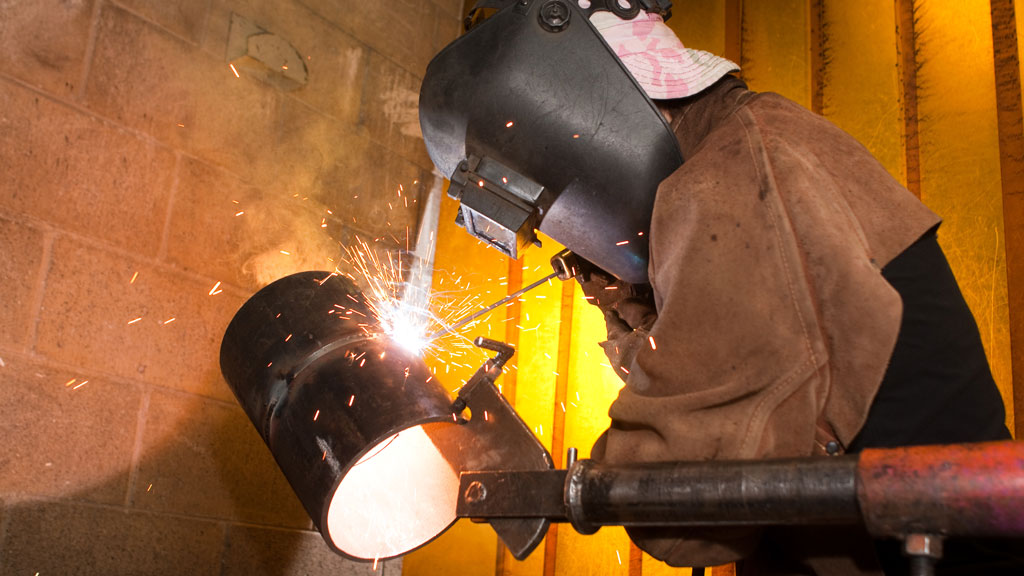Twenty-two high schools across Canada recently received a total of more than $1.9 million so they could improve and enhance their welding programs.
The money came from the CWB Welding Foundation’s (CWB) Capital Equipment and Consumables Fund, plus co-investment from partner organizations.
The funding enables recipient high schools to complete such improvements as installing additional welding booths/stations, upgrading ventilation systems and purchasing steel, and doing it before schools re-opened in September.
CWB executive director Susan Crowley says most high schools undertake their welding shop upgrades in the summer, while school is on its annual two-month break.
“Some schools have had to change their plans or the timing of the work due to the impact of COVID-19 —from the implementation of physical distancing directives and the cost and availability of materials and labour— but it’s important to be ready to deliver effective welding instruction when schools re-open,” said Crowley in an announcement.
Edward Milne Community School in Sooke, B.C. (near Victoria) is one of the recipients of CWB funding.
The school’s welding program is making good use of the money, says dual credit welding instructor Mathew Harmeson.
“CWB provided us with machines and a stable supply of consumables (welding supplies),” said Harmeson. “It also matched the school district’s support of $25,000.”
The school now has all it needs to run its welding program, he says.
Edward Milne’s welding students will be busy building mini jet boats this year. When completed, the vessels will either be sold or used by the students themselves.
“As of this September (2020), they have all been spoken for,” said Harmeson.
Ryan Edgar, a teacher at Argyle Secondary School in North Vancouver, says the school received “a huge grant” from CWB to install six new welding booths at the new building to which Argyle is moving in a few months.
“The school district is a strong promoter of the trades,” said Edgar. “Every school in the district has an area set aside for metal work and Argyle has a dedicated welding shop.”
Welding is a popular subject at Argyle, which enrolls about 60 welding students per year.
CWB, the source of the funding for the schools’ welding programs is a national charity that was founded in 2013. It makes use of support from industry and community organizations to address the welding skilled trade shortage in Canada.
According to the CWB website, its education-based programs and initiatives reduce barriers that affect such key groups as elementary, secondary, and post-secondary students and educators; Indigenous people; women; and the underrepresented.
“We envision a future where all individuals are encouraged and given the support they need to reach their true potential in a career in welding.”
Based on CWB’s best estimate, there are about 350 welding programs in Canadian secondary schools and approximately 90 in post-secondary institutions, such as BC Institute of Technology (BCIT) which offers three welding programs: welding foundation, welding level A and welding level B.
All the programs are being offered this academic year, says James Cai, associate dean of industrial construction in BCIT’s School of Construction and the Environment.
“Normally, we have 112 welding seats per year,” said Cai. “Due to COVID-19, we reduced capacity by 50 per cent, to enable social distancing, so there are 56 seats this year. Once the pandemic is over, we’ll go back to 112 seats per year.”
This year’s welding program at BCIT combines online and shop learning, with 80 per cent to 90 per cent of instruction taking place in the shop.
Cai says the demand for graduates of the welding program is high and growing.
“They find employment in a number of different sectors, such as shipbuilding, manufacturing and construction,” he said.
Not to mention education.
Nicole LeClair, a welding engineering technologist in Burlington, Ont., is a welding professor at Sheridan College and Mohawk College in Ontario.
“I’ve been a welder since 1998,” said LeClair. “After graduating from high school, I started an Arts degree, but dropped out when I realized I didn’t enjoy it.”
She took a night class in welding at Algonquin College in Ottawa, liked it and took more courses in the subject, finishing with a diploma in welding engineering technology at Conestoga College.
“It’s been a good career for me, and it’s a good career for young people, including young women, because there’s a need for welders now,” said LeClair. “Women make good welders because of their attention to detail. And they’ve already entered the trade. Women make up about four percent of everyone employed in construction in general, but nine percent in welding.”











Recent Comments
comments for this post are closed